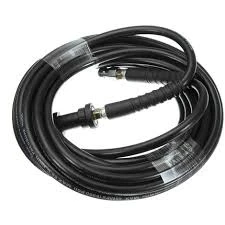rubber brake hose
Understanding Rubber Brake Hoses Essential Components for Vehicle Safety
Rubber brake hoses play a critical role in the overall functionality and safety of vehicles. As a key component of the hydraulic brake system, these hoses are responsible for transmitting brake fluid from the master cylinder to the brake calipers. Understanding the construction, functionality, maintenance, and importance of rubber brake hoses can help vehicle owners ensure both safety and performance on the road.
Construction and Functionality
Rubber brake hoses are typically constructed from synthetic rubber compounds that are designed to withstand extreme temperatures, pressure, and environmental conditions. The inner layer of the hose is designed to be resistant to brake fluid, which is often corrosive. The outer layer provides protection from abrasions, UV rays, and various chemicals encountered in the automotive environment.
These hoses are flexible enough to allow for movement and vibration, ensuring that they can adapt to the vehicle's dynamics without compromising integrity. When the driver presses the brake pedal, hydraulic pressure is generated in the master cylinder. This pressure travels through the brake fluid within the rubber brake hose to actuate the brake calipers, which, in turn, apply pressure to the brake pads against the rotors, slowing or stopping the vehicle.
Types of Rubber Brake Hoses
Rubber brake hoses come in various types, including
1. Standard Rubber Hoses These are the most commonly used hoses and are suitable for most standard braking applications. They offer a good balance between flexibility and durability. 2. Reinforced Rubber Hoses For high-performance vehicles, reinforced hoses made with multiple layers of rubber and braided materials provide higher resistance to pressure and heat.
3. PTFE (Polytetrafluoroethylene) Hoses While not typical rubber, PTFE hoses are an alternative that offers superior chemical resistance and lower friction, often used in high-end or racing applications.
rubber brake hose

Maintenance and Lifespan
Rubber brake hoses are not immune to wear and tear. Over time, they can degrade due to factors such as exposure to heat, moisture, and road chemicals. It’s essential to regularly inspect brake hoses for signs of wear, such as cracks, bulges, or leaks. Any noticeable damage can compromise braking performance and should be addressed immediately.
Most vehicle manufacturers recommend replacing rubber brake hoses every four to six years, even if there are no visible signs of wear. This preventative measure helps ensure reliability and safety.
Importance of Quality
The importance of high-quality rubber brake hoses cannot be overstated. Inferior products may not withstand the stresses and demands of standard braking performance, leading to catastrophic failures. Always choose hoses that meet or exceed industry standards, such as those set by the Department of Transportation (DOT) in the United States.
Moreover, opting for hoses from reputable manufacturers ensures that you’re getting a product that has been rigorously tested for performance, durability, and safety.
Conclusion
In conclusion, rubber brake hoses are an integral element of a vehicle's braking system and are vital for ensuring safe operation. Understanding their construction, functionality, and maintenance needs is essential for vehicle owners who want to prioritize safety and performance. Regular inspection and timely replacement of worn or damaged hoses can prevent dangerous braking failures and ensure a reliable driving experience. Always invest in quality parts and maintain your vehicle proactively to keep your brake system functioning optimally. Your safety on the road depends on it.
-
Ultimate Spiral Protection for Hoses & CablesNewsJun.26,2025
-
The Ultimate Quick-Connect Solutions for Every NeedNewsJun.26,2025
-
SAE J1401 Brake Hose: Reliable Choice for Safe BrakingNewsJun.26,2025
-
Reliable J2064 A/C Hoses for Real-World Cooling NeedsNewsJun.26,2025
-
Heavy-Duty Sewer Jetting Hoses Built to LastNewsJun.26,2025
-
Fix Power Steering Tube Leaks Fast – Durable & Affordable SolutionNewsJun.26,2025

